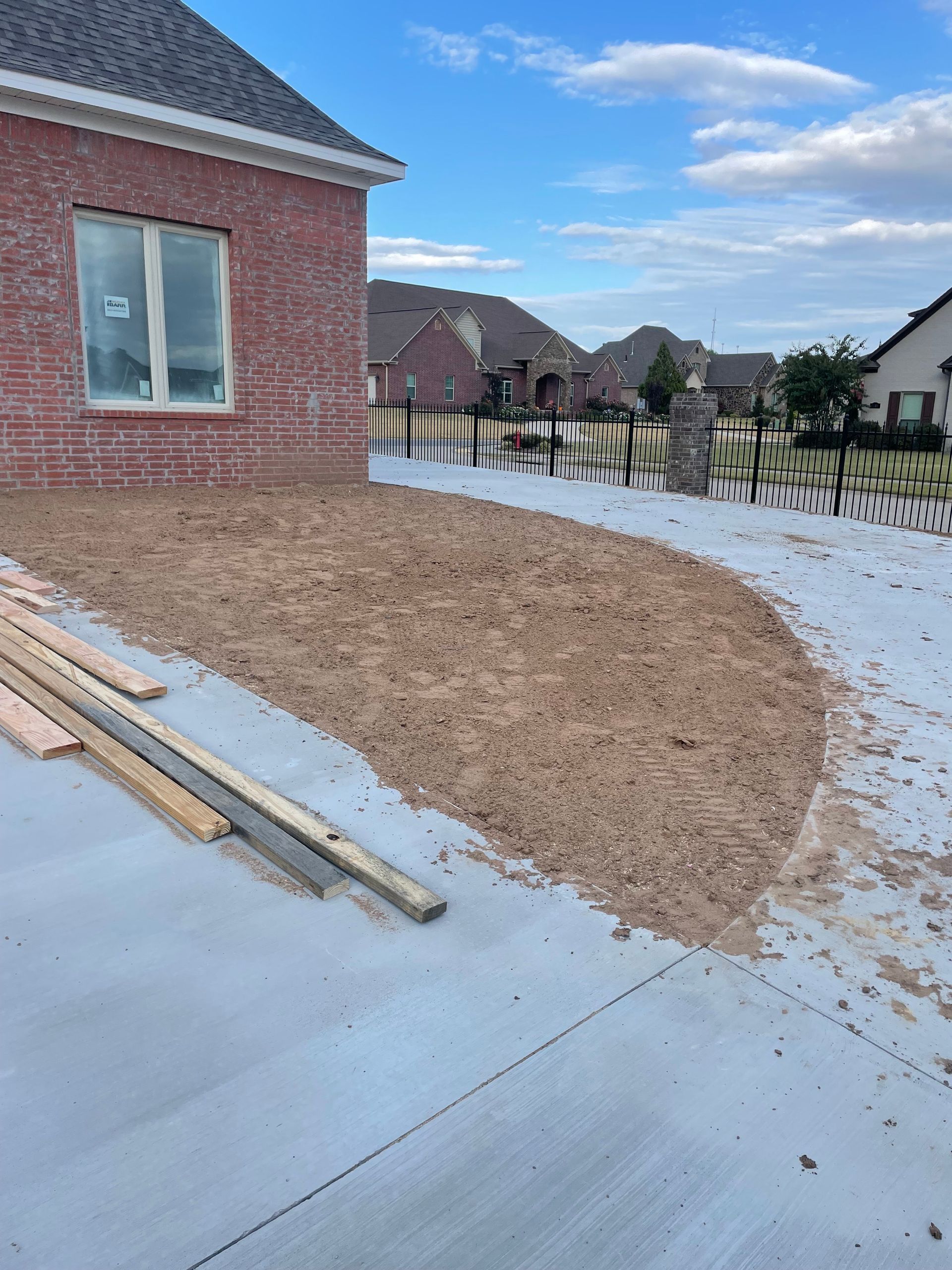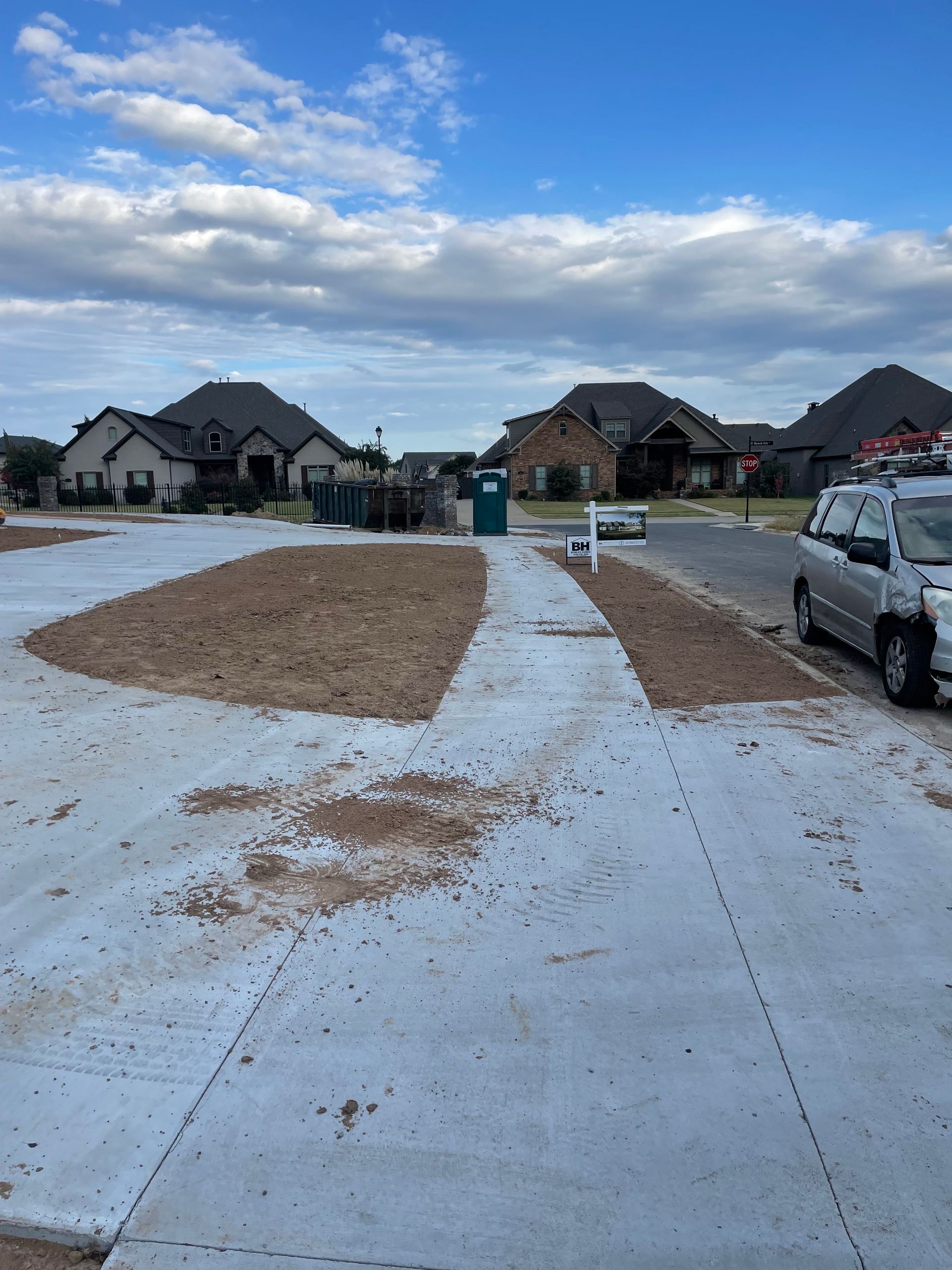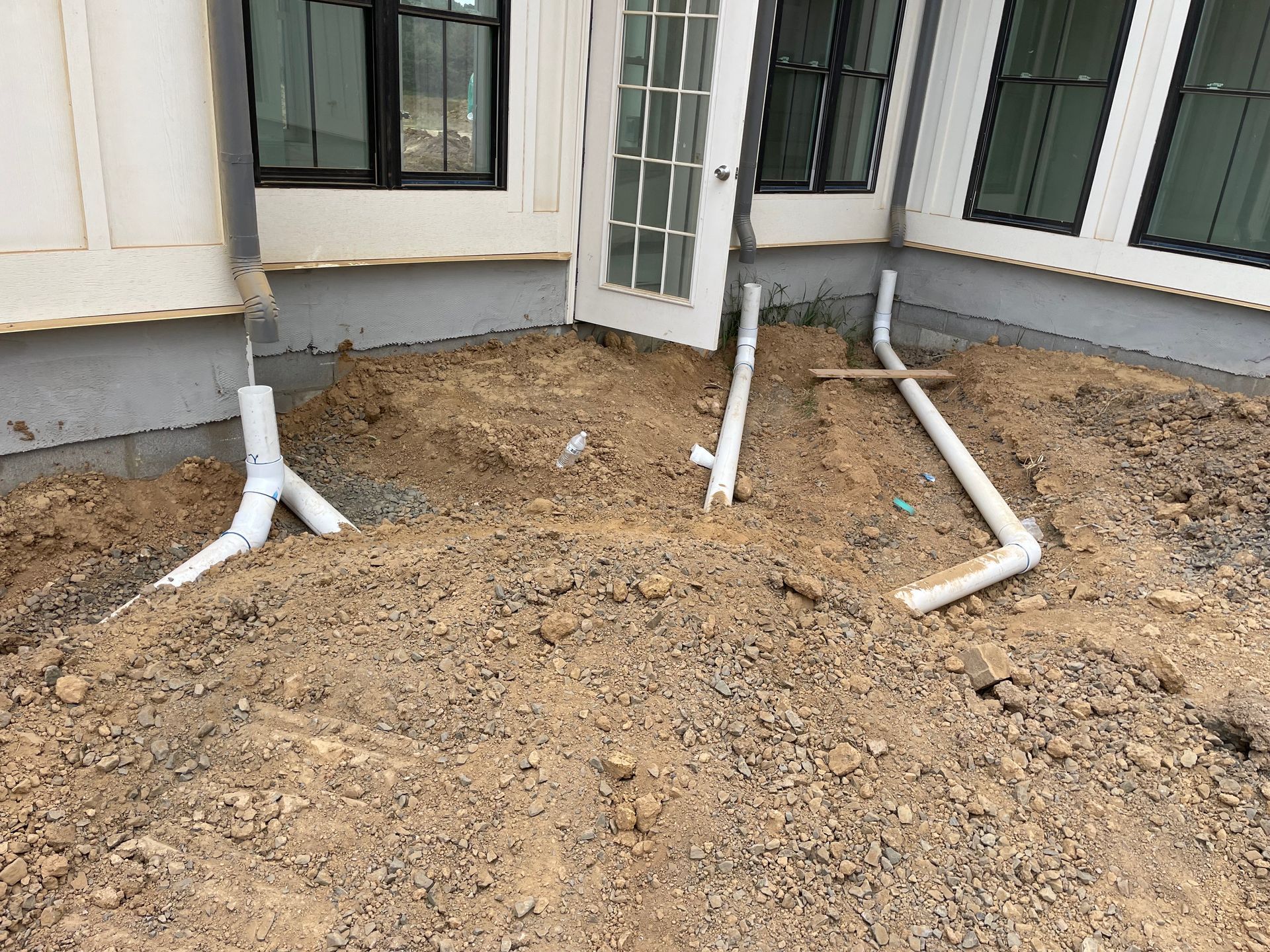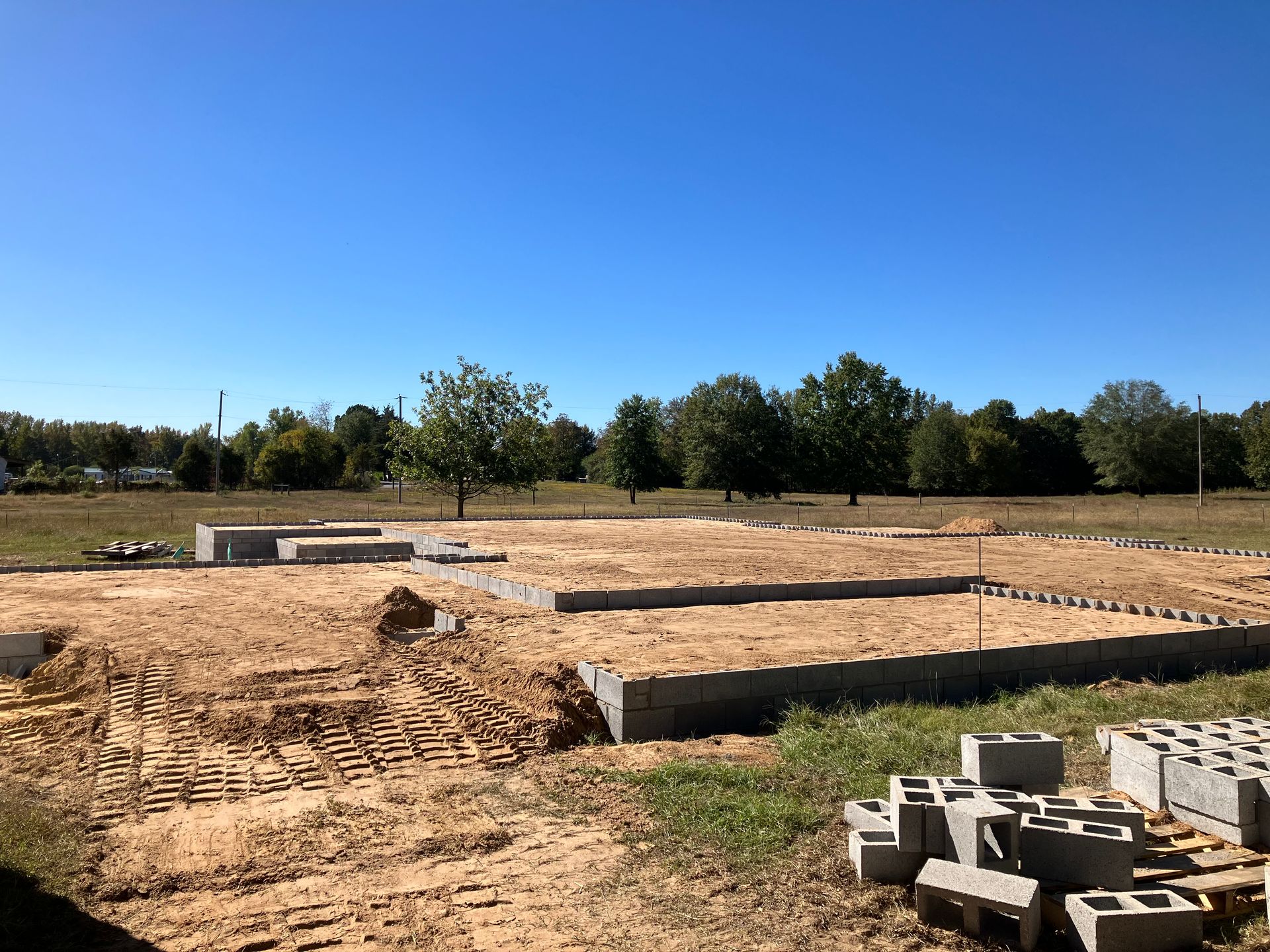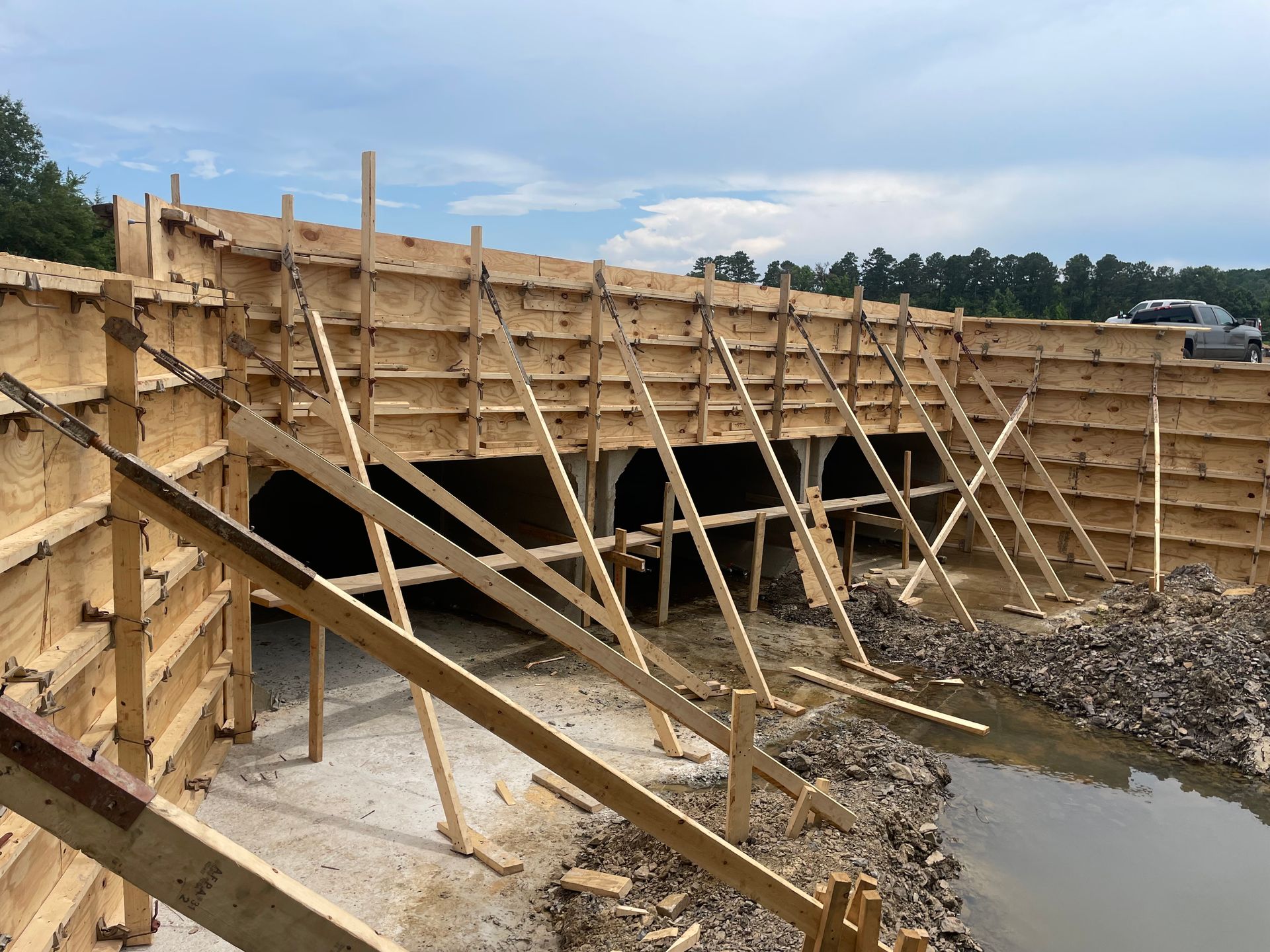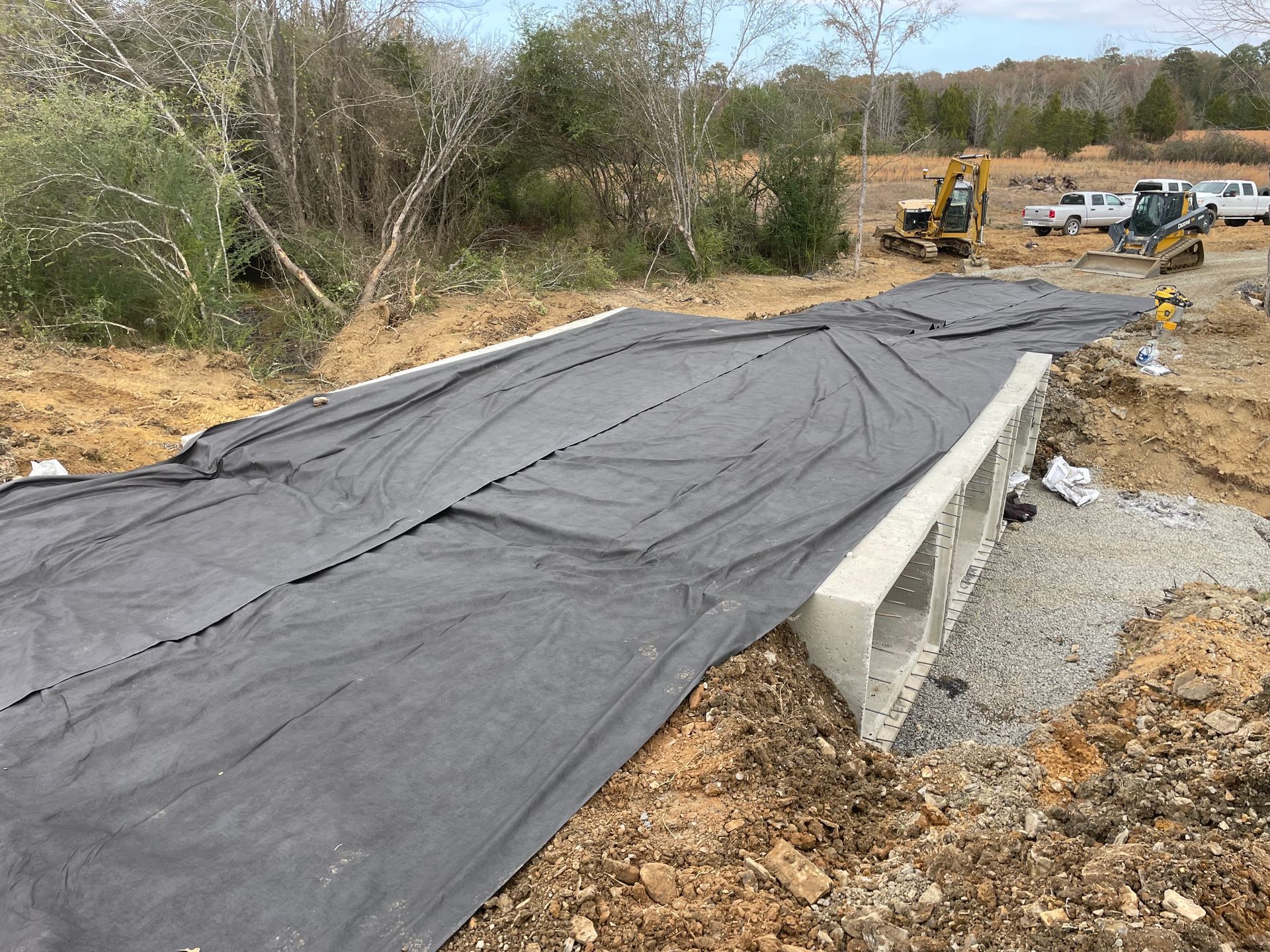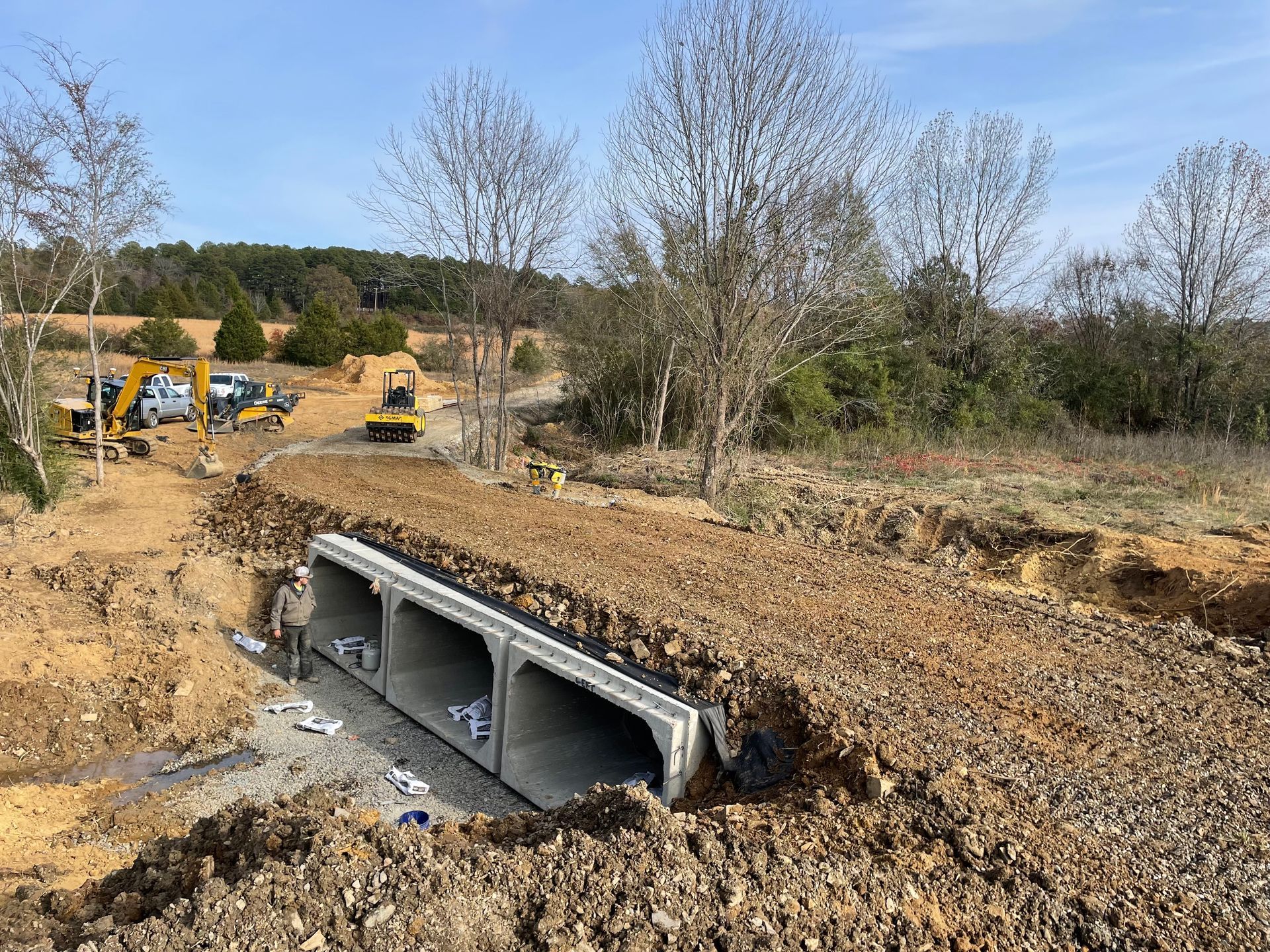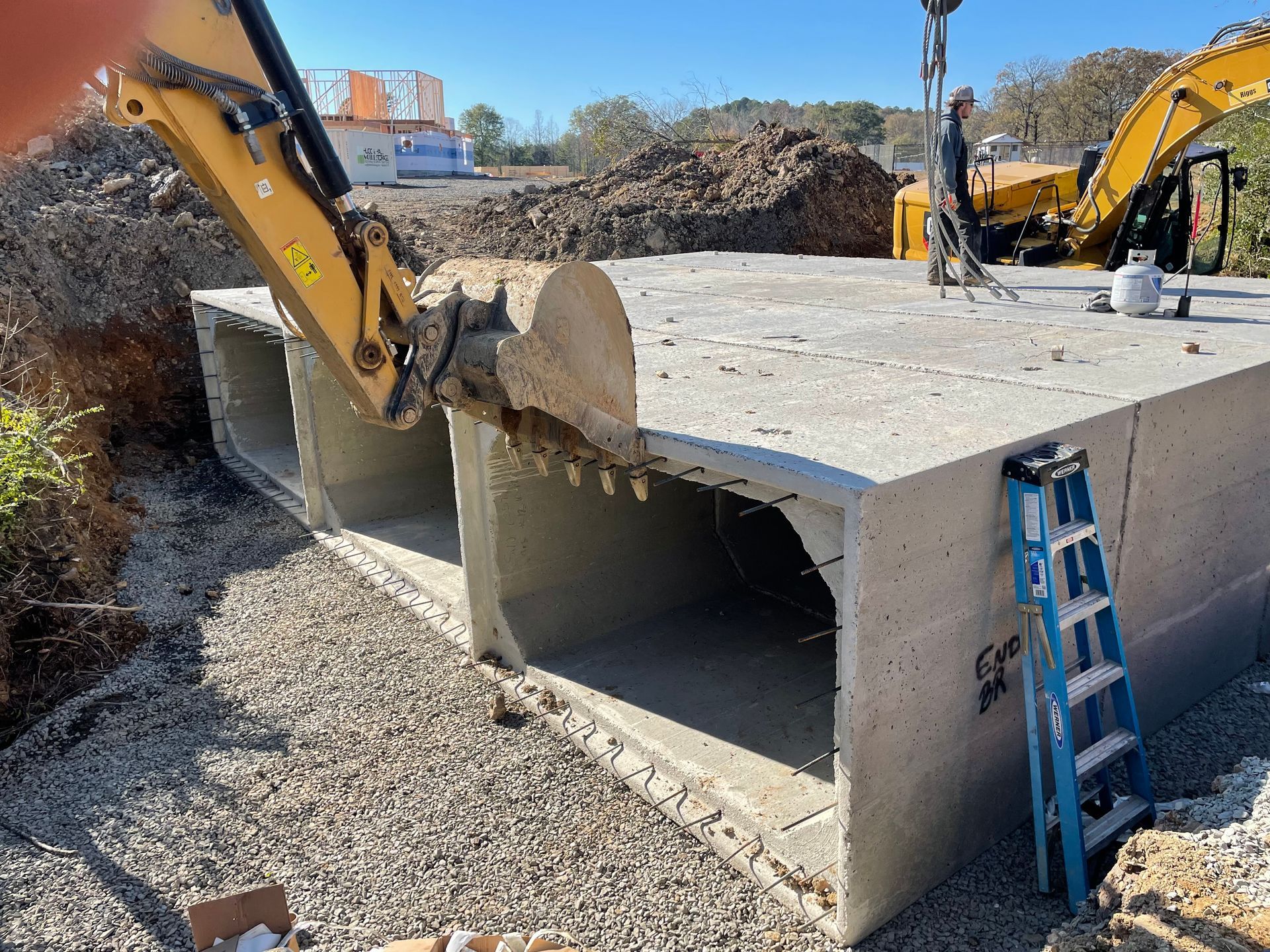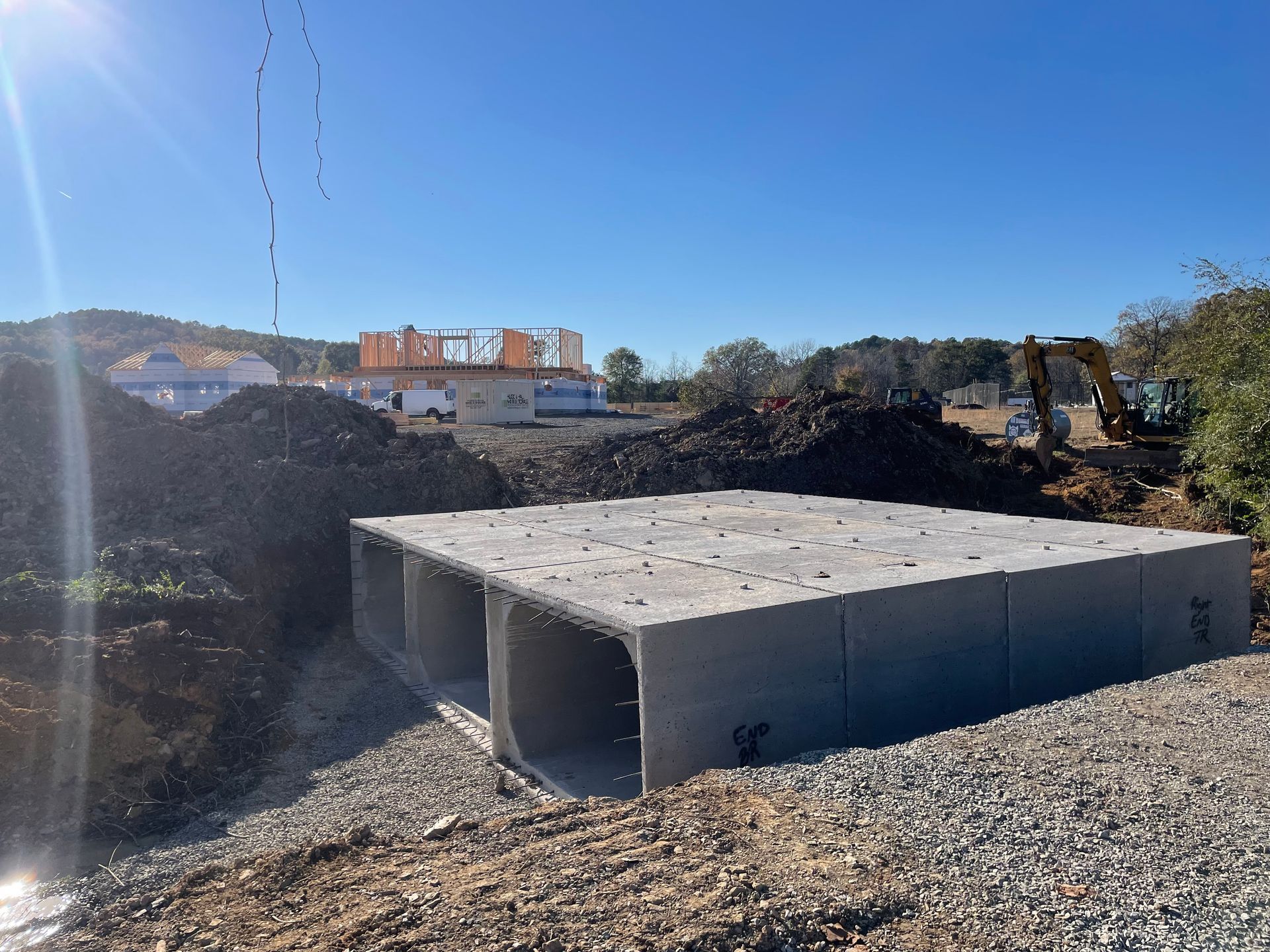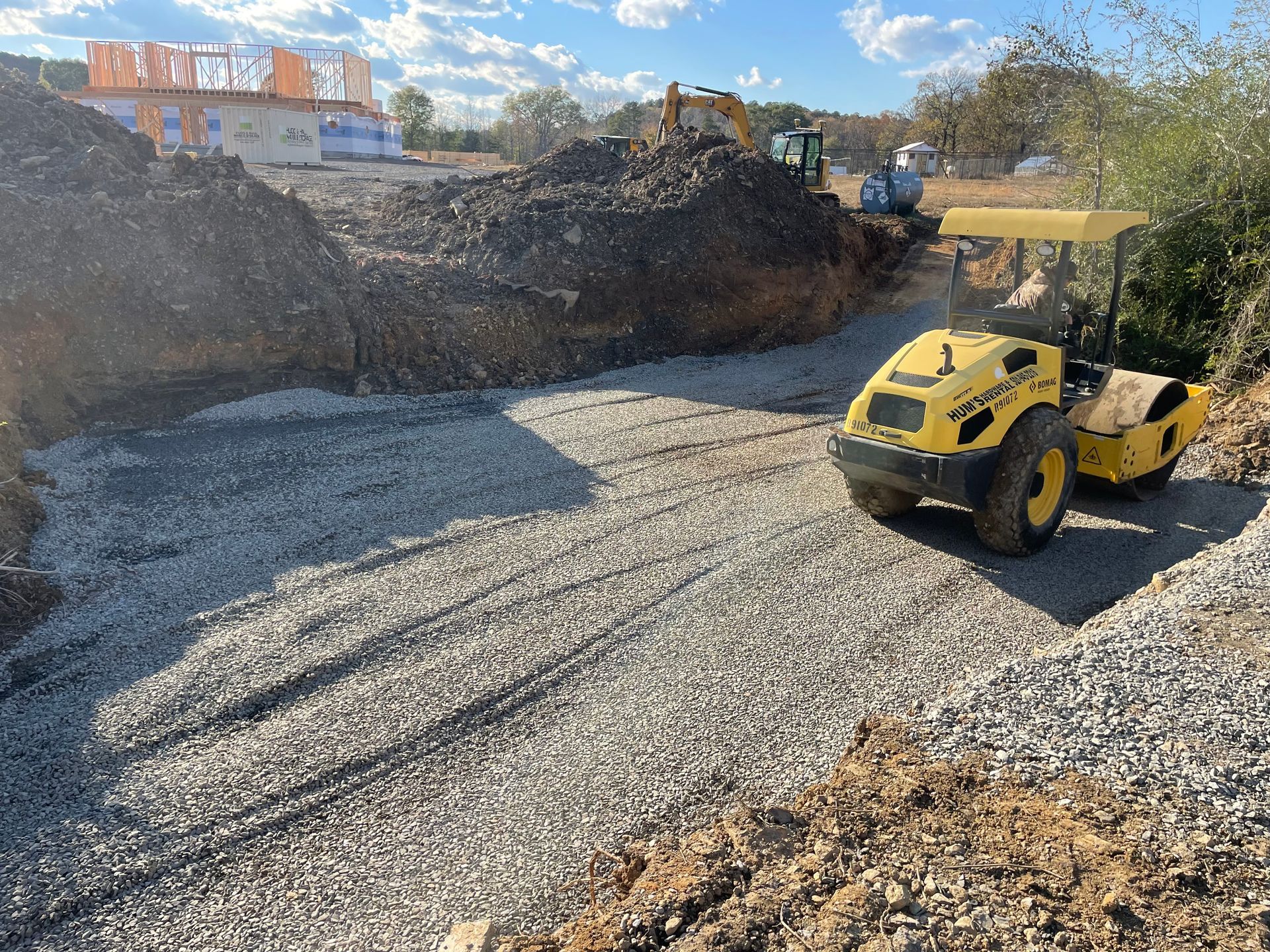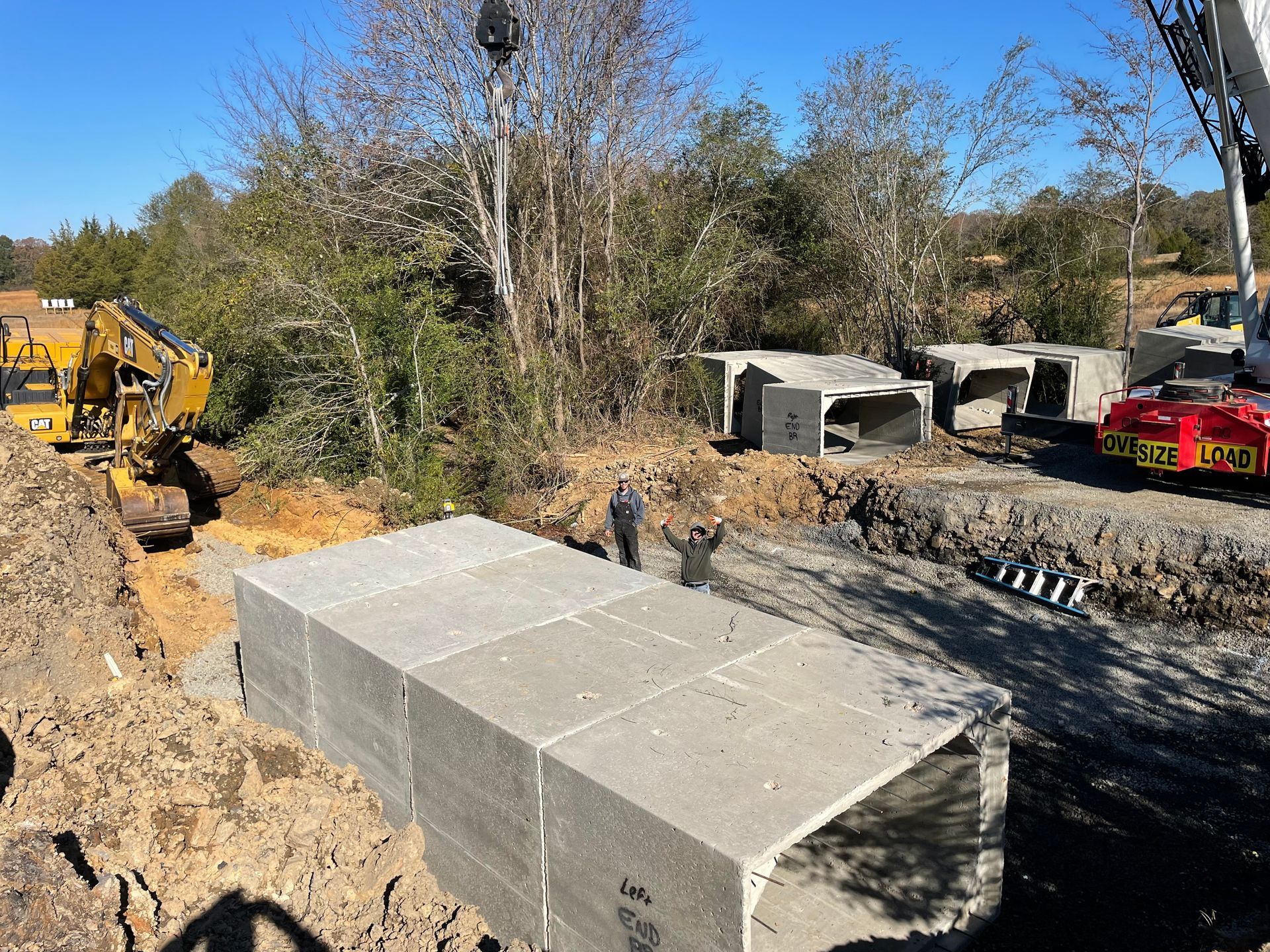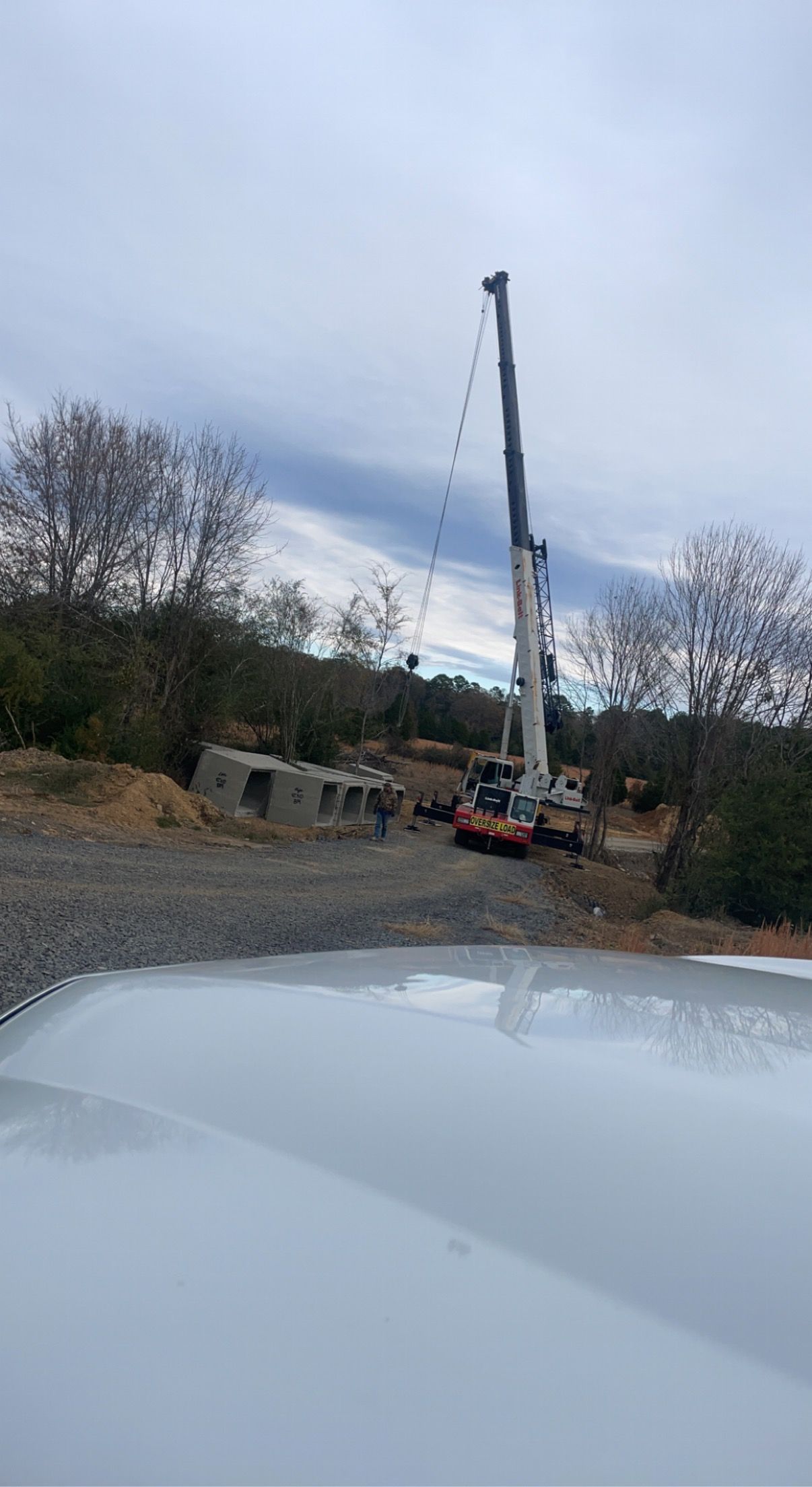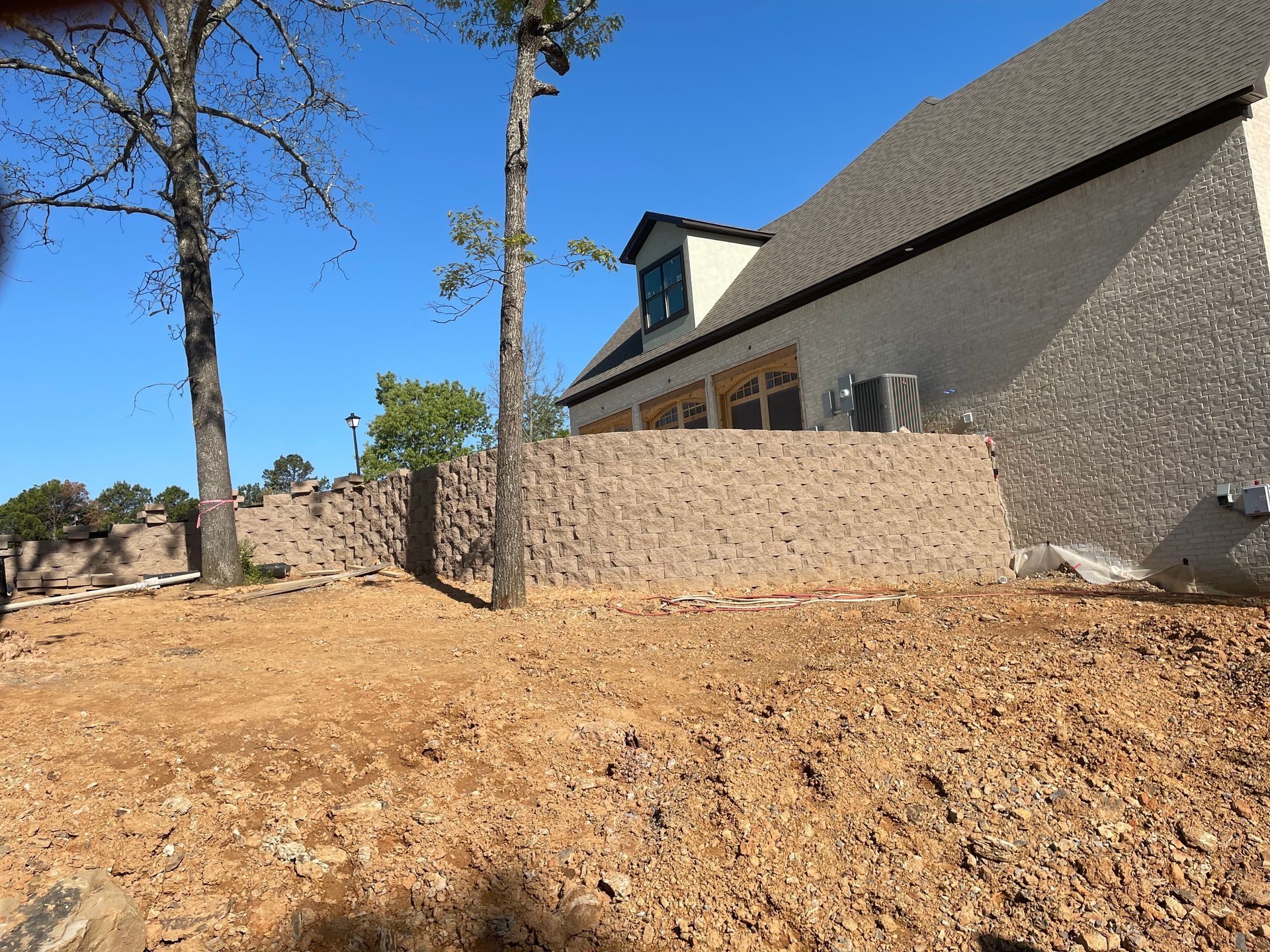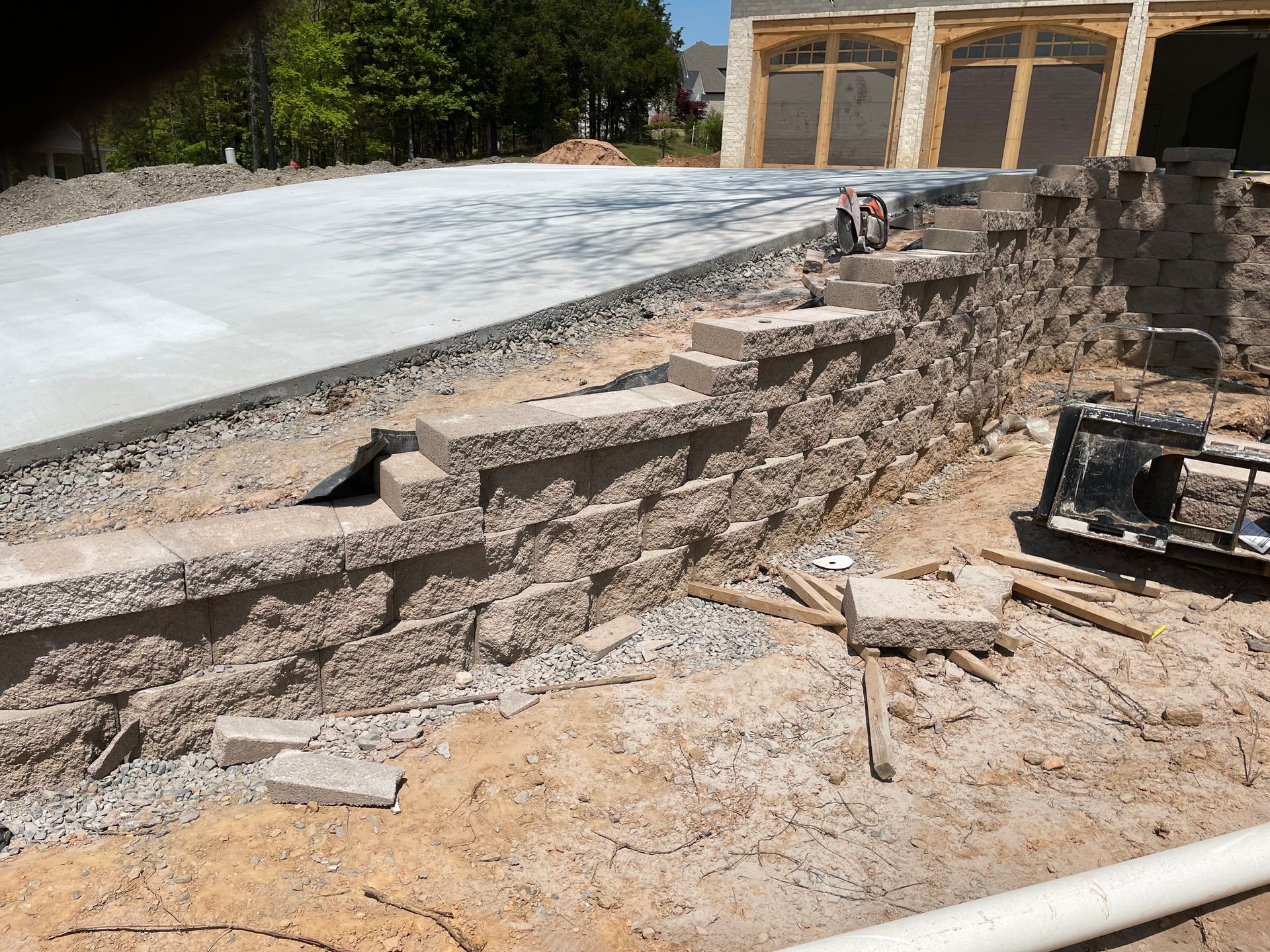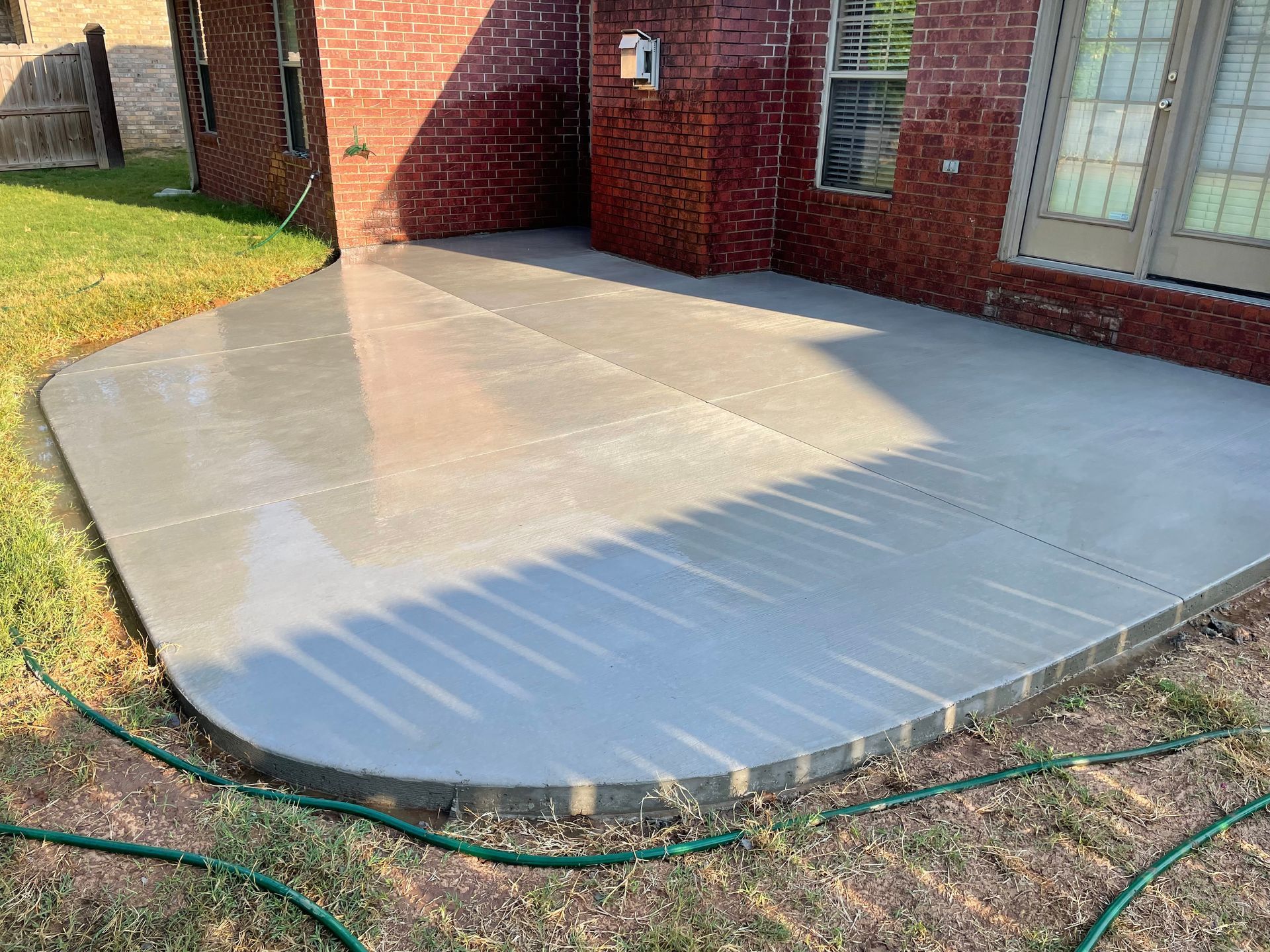STAY STRONG WITH US
Call Us
SERVICES
Earth Work
Earthwork services involve the excavation, movement, and grading of soil, rock, and other materials to prepare a site for construction, landscaping, or infrastructure projects.
These services are essential for creating stable foundations and ensuring proper drainage.
Types of Earthwork Services
- Excavation – Removing soil, rock, or other materials to create foundations, trenches, or basements.
- Grading – Leveling or sloping the ground to ensure stability and proper drainage.
- Site Preparation – Clearing land by removing trees, debris, and existing structures.
- Compaction – Compressing soil to provide a strong base for construction.
- Cut and Fill – Balancing soil by cutting high areas and filling low spots to achieve a level surface.
- Trenching – Digging narrow excavations for utilities like water, gas, and electrical lines.
- Erosion Control – Implementing measures to prevent soil erosion, such as silt fences or retaining walls.
Drainage
Drainage services involve the design, installation, maintenance, and repair of systems that manage water flow to prevent flooding, erosion, and water damage.
These services are essential for both residential and commercial properties, ensuring proper water management and structural integrity.
Types of Drainage Services
- Surface Drainage – Redirects excess water from the ground surface using channels, ditches, or storm drains.
- Subsurface Drainage (French Drains) – Uses underground pipes or gravel trenches to remove water from the soil, preventing saturation.
- Stormwater Management – Includes catch basins, retention ponds, and storm drains to control heavy rainwater runoff.
- Gutter and Downspout Systems – Collects and directs rainwater away from buildings to prevent foundation damage.
- Sewer and Septic System Drainage – Maintains proper flow of wastewater through sewer lines and septic tanks.
- Slope Grading for Drainage – Adjusts land elevation to ensure water flows away from structures.
- Drainage Repair & Maintenance – Fixes clogged pipes, damaged drains, and erosion problems to maintain efficiency.
Importance of Drainage Services
- Prevents flooding and water damage
- Reduces soil erosion and foundation weakening
- Protects landscaping and paved surfaces
- Enhances property value and safety
Backfill
Backfill services involve refilling excavated areas with soil, gravel, sand, or other materials to restore stability and provide support for structures, pipelines, or foundations.
This process is essential in construction, landscaping, and utility installation to ensure durability and prevent settling or erosion.
Types of Backfill Materials
- Soil – Commonly used but must be compacted properly to avoid settling.
- Gravel – Provides good drainage and is often used around pipes and foundations.
- Sand – Helps with compaction and drainage, commonly used in utility trenches.
- Crushed Stone – Ideal for road construction and foundation support.
- Flowable Fill (Controlled Low-Strength Material – CLSM) – A cement-based material used for easy filling and high stability.
Backfill Process
- Material Selection – Choosing the right type of backfill based on project requirements.
- Layered Filling – Placing backfill in layers to ensure even distribution.
- Compaction – Compressing each layer using rollers, tampers, or vibratory equipment to prevent settling.
- Moisture Control – Adding or removing water to achieve proper compaction.
- Final Grading – Smoothing and leveling the surface for construction or landscaping.
Common Applications of Backfill Services
- Building Foundations – Stabilizes structures and prevents foundation shifts.
- Utility Trenches – Protects underground pipes, cables, and conduits.
- Road and Pavement Construction – Provides a strong base for roads and sidewalks.
- Retaining Walls – Supports walls and prevents soil erosion.
Proper backfill ensures the longevity and stability of any construction project.
Box Culvert Installation
Box culvert installation is the process of placing reinforced concrete structures designed to manage water flow under roads, railways, and other infrastructure.
These box-shaped culverts are used for drainage, flood control, and transportation of water or utilities.
Steps in Box Culvert Installation
- Site Preparation
- Clear the area of debris, vegetation, or existing structures.
- Excavate the ground to create a level foundation for the culvert.
2. Foundation Preparation
- Install a compacted gravel or concrete base to provide stability.
- Ensure proper grading to direct water flow efficiently.
3. Placement of Box Culverts
- Position the precast concrete box culvert sections using cranes.
- Align each section properly to ensure a secure connection.
- Seal the joints with waterproofing material or grout.
4. Backfilling and Compaction
- Fill the excavated area around the culvert with suitable backfill material (sand, gravel, or soil).
- Compact the backfill in layers to prevent settling or shifting.
5. Final Grading and Surface Restoration
- Restore the road, pavement, or landscape above the culvert.
- Ensure proper drainage around the culvert to prevent erosion.
Benefits of Box Culvert Installation
✅ Efficient Water Flow Management – Helps prevent flooding and erosion.
✅ Strong and Durable – Made from reinforced concrete for long-lasting performance.
✅ Easy Maintenance – Open rectangular design allows for easy inspection and cleaning.
✅ Versatile Applications – Used in drainage systems, road crossings, tunnels, and underground passages.
Retaining Wall
A retaining wall is a structure built to hold back soil, prevent erosion, and create leveled surfaces on sloped terrain.
Retaining wall service installation involves designing, constructing, and reinforcing walls using various materials to ensure stability and durability.
Steps in Retaining Wall Installation
- Site Preparation
- Clear debris, vegetation, or existing structures.
- Excavate the area to create a level foundation.
2. Foundation Construction
- Install a compacted gravel or concrete base for stability.
- Ensure proper drainage to prevent water buildup behind the wall.
3. Wall Construction
- Stacking Materials: Depending on the type of wall, concrete blocks, bricks, natural stone, wood, or reinforced concrete panels are placed.
- Securing the Structure: Interlocking blocks, mortar, or reinforcement bars (for concrete walls) are used to strengthen the wall.
- Backfilling: Soil, gravel, or crushed stone is placed behind the wall in layers and compacted to ensure stability.
4. Drainage Installation
- A drainage system (perforated pipes, gravel, or weep holes) is installed to prevent water pressure from weakening the wall.
5. Final Grading and Finishing
- The top of the wall is leveled and capped if needed.
- Landscaping or surface restoration is completed around the wall.
Types of Retaining Walls
- Gravity Walls – Rely on their weight to hold back soil (e.g., stone or concrete block walls).
- Reinforced Walls – Use steel bars or geogrids for added strength.
- Cantilevered Walls – Have a concrete base and leverage the weight of soil for stability.
- Anchored Walls – Use cables or anchors driven into the ground for support.
Benefits of Retaining Walls
✅ Prevents Soil Erosion – Stabilizes slopes and protects landscapes.
✅ Manages Water Flow – Helps with drainage and flood control.
✅ Creates Usable Space – Levels sloped areas for gardens, patios, or driveways.
✅ Enhances Property Value – Adds aesthetic appeal and structural integrity.
Concrete Install
Concrete service installation involves the process of preparing, pouring, and finishing concrete for various construction projects.
It is widely used in building foundations, sidewalks, driveways, patios, roads, and structural elements due to its durability and strength.
Steps in Concrete Installation
- Site Preparation
- Clear the area of debris, vegetation, or old structures.
- Excavate and grade the ground to ensure a level surface.
- Install forms (wood or metal) to shape the concrete and hold it in place.
2. Sub-Base Preparation
- Lay a compacted layer of gravel or sand to provide a stable base.
- Use reinforcement (rebar or wire mesh) for added strength if required.
3. Mixing and Pouring Concrete
- Prepare concrete mix (cement, sand, gravel, water, and additives).
- Pour the concrete into the prepared forms evenly.
- Use tools like rakes or shovels to distribute the concrete.
4. Leveling and Finishing
- Screed the surface with a straight edge to smooth and level the concrete.
- Use a float or trowel to create a uniform finish.
- Apply texture or stamping if a decorative finish is needed.
5. Curing and Sealing
- Allow the concrete to cure for proper strength development (typically 24-48 hours before light use).
- Keep the surface moist or apply a curing compound to prevent cracking.
- Seal the concrete for protection against moisture and wear.
Types of Concrete Services
- Foundations & Slabs – For homes, buildings, and industrial structures.
- Driveways & Sidewalks – Durable and weather-resistant surfaces.
- Stamped & Decorative Concrete – Aesthetic finishes for patios, pool decks, and walkways.
- Retaining Walls & Structural Concrete – Supports landscaping and construction projects.
- Roads & Pavements – Heavy-duty surfaces for vehicles and foot traffic.
Benefits of Concrete Installation
✅ Durability & Strength – Long-lasting material resistant to weather and wear.
✅ Low Maintenance – Requires minimal upkeep compared to other materials.
✅ Versatile Applications – Suitable for residential, commercial, and industrial projects.
✅ Energy Efficient – Provides thermal mass, helping with insulation.
Pond Rehabilitation and Installation
Pond rehab and installation services involve designing, constructing, restoring, or improving ponds for aesthetic, agricultural, recreational, or environmental purposes.
Whether installing a new pond or rehabilitating an existing one, proper planning, excavation, and water management are essential to ensure long-term functionality and sustainability.
Pond Installation Process
1. Planning and Design
- Assess site conditions (soil type, water source, drainage, and intended use).
- Obtain necessary permits and approvals (if required).
- Determine the pond’s size, depth, shape, and liner type (natural, clay, or synthetic liner).
2. Site Preparation and Excavation
- Clear vegetation, debris, or old structures from the site.
- Excavate to the required depth and shape while ensuring proper slope grading.
- Remove unstable soil and prepare a compacted base for the pond.
3. Lining and Sealing
- Apply a clay layer, bentonite, or a synthetic liner (EPDM, PVC, or geomembrane) to prevent leaks.
- Install an underlayment to protect the liner from punctures.
4. Water Inflow and Drainage System
- Set up a reliable water source (rain runoff, well, or stream).
- Install an overflow pipe or spillway to manage excess water.
- Add aeration systems (fountains or diffusers) for oxygen circulation, if needed.
5. Landscaping and Final Touches
- Stabilize pond banks with vegetation, rocks, or retaining walls to prevent erosion.
- Add fish, aquatic plants, or decorative features as per the pond’s purpose.
- Allow water to settle and monitor for leaks or adjustments.
Pond Rehabilitation Process
1. Inspection and Assessment
- Identify issues such as erosion, leaks, excessive algae, sediment buildup, or poor water quality.
- Determine if dredging, liner replacement, or drainage improvements are needed.
2. Sediment and Debris Removal
- Dredge excess silt and organic matter to restore depth.
- Remove invasive plants, algae, or pollutants affecting water quality.
3. Structural Repairs
- Fix leaks, cracks, or damaged liners.
- Reinforce embankments or retaining structures to prevent collapse.
4. Water Quality and Ecosystem Restoration
- Install aeration systems to improve oxygen levels and reduce algae growth.
- Introduce beneficial bacteria, plants, or fish to restore ecological balance.
- Adjust pH levels and nutrient content for healthier water conditions.
Benefits of Pond Rehab & Installation Services
✅ Enhances Aesthetic Appeal – Creates a beautiful water feature for landscaping.
✅ Supports Wildlife and Aquatic Life – Provides a habitat for fish, birds, and beneficial plants.
✅ Improves Water Management – Helps with stormwater retention and erosion control.
✅ Increases Property Value – Adds a functional and attractive element to homes or commercial spaces.
✅ Reduces Maintenance Costs – Proper design and rehabilitation extend the lifespan of the pond.
Pest Control
Pest, such as ants, spiders, and roaches, can wreak havoc on your home. Let us help with your pest control solutions.
We can help with your home or business and can handle even the most difficult home invaders and send them Packing.
Residential Pest Control:
We offer a pest control service to meet the needs for your home. Our professional will work with you to design a program to take care of unwanted invaders as well as provide a treatment plan to help protect against future invaders with recurring preventative treatments. We provide treatment plans for over 13 common pest that may invade your home. We stand behind our service with our service guarantee. We will come back at no additional charge in-between Regular service visit if pest come back.
Commercial Pest Control:
Protecting your business from pest is important. Every business is different and may have different requirements based on your day to day. Our experts will develop a plan and action to help rid your business of unwanted intruders and keep them under control. We have plans for your restaurant, office space, warehouse, hotels, and more.
Mosquito & Tick:
Mosquito and Ticks make it hard to spend time outside. We can help with our Mosquito and tick services. We offer plans to help keep this pest at a minimum so you can enjoy your outside oasis. Let our expert service professionals set the plan that is right for your oasis.
✔ Prevents property damage
✔ Reduces health risks from pest-related diseases
✔ Ensures compliance with hygiene regulations
✔ Offers long-term pest prevention
Turf Care
Keep your Lawn and Landscape areas healthy and thriving with our 6-treatment program. We work to keep your yard healthy by inspecting and seeing what your yard needs. Our program includes your pre-emergent, post-emergent control, and fertilization. We work to keep the weeds from developing and treating the ones that break through while giving your turf the nutrients it needs to thrive.
Tree and Shrub Care (Ornamental):
We offer a 6-treatment plan for your flower beds. We will provide your beds with pre-emergent to help reduce unwanted weeds and fertilization to help your trees and shrubs thrive. We provide a detailed inspection on each visit so that we can keep insects and fungi from harming your trees and shrubs.
Mosquito Control
Mosquito control services help reduce and eliminate mosquito populations to prevent bites and mosquito-borne diseases such as malaria, dengue fever, Zika virus, and West Nile virus. These services use a combination of methods to target mosquitoes at different life stages—larvae, pupae, and adults—to provide long-term relief.
Types of Mosquito Control Services:
Residential Mosquito Control – Protects homes, yards, and outdoor spaces from mosquito infestations.
Commercial Mosquito Control – Ensures businesses, hotels, parks, and event venues remain mosquito-free.
Municipal & Public Health Mosquito Control – Large-scale mosquito control for cities and communities to prevent outbreaks of mosquito-borne diseases.
Methods Used in Mosquito Control:
Source Reduction – Eliminating standing water where mosquitoes breed (e.g., gutters, birdbaths, and puddles).
Larvicides – Chemicals or biological agents that target mosquito larvae before they mature.
Adulticides – Spraying insecticides to kill adult mosquitoes, often done via fogging or misting.
Biological Control – Introducing natural predators like fish or bacteria (e.g., Bacillus thuringiensis israelensis, or Bti) to kill mosquito larvae.
Mosquito Traps & Barriers – UV light traps, CO2 traps, and insect-repellent barriers to reduce mosquito populations.
Integrated Pest Management (IPM) – A combination of chemical, biological, and environmental strategies for long-term mosquito control.
Benefits of Mosquito Control Services:
✔ Reduces the risk of mosquito-borne diseases
✔ Enhances outdoor comfort
✔ Prevents mosquito breeding for long-term relief
✔ Eco-friendly options available
CONTACT US
CONTACT US
We will get back to you as soon as possible
Please try again later
All Rights Reserved | Queen and I Construction | Powered by PCSI

